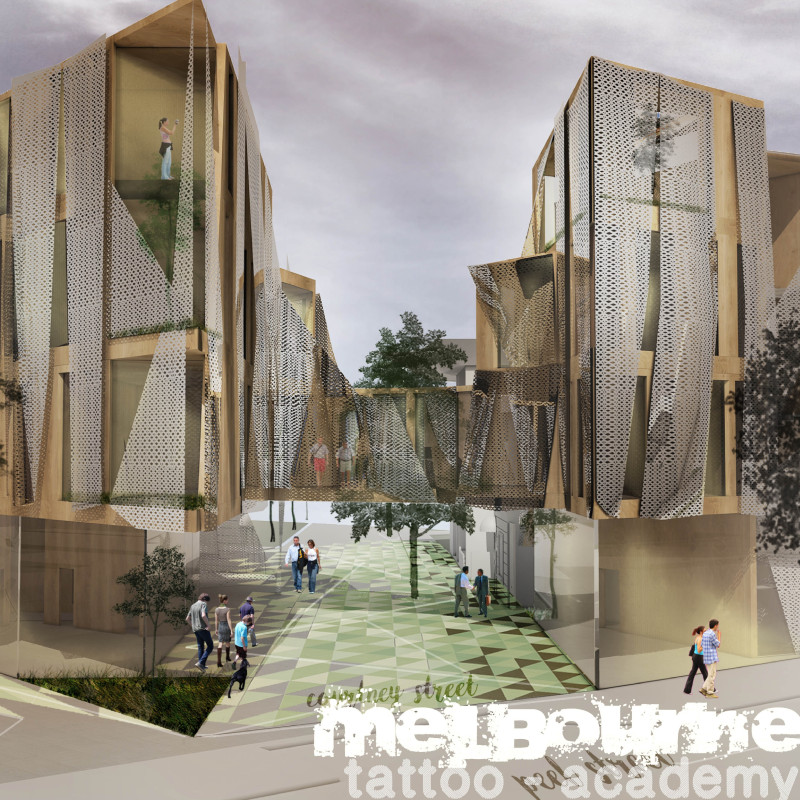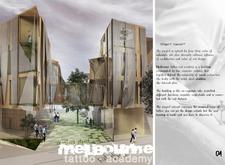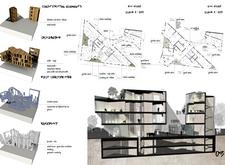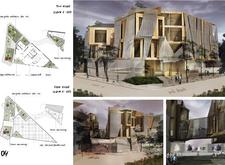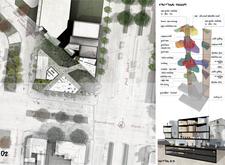5 key facts about this project
### Project Overview
The Melbourne Tattoo Academy is strategically located within Melbourne, Australia, reflecting the city’s dynamic art culture while engaging with the rich cultural diversity present in its surroundings. The intent behind the design is to create a space that embodies both the artistic spirit of tattoo culture and the educational mission of the academy, providing an environment that fosters creativity and collaboration.
### Architectural Strategy
**Form and Structure:**
The design features two interrelated prismatic structures that symbolize the adaptability and evolution inherent in tattoo artistry. The angular façades create a dynamic interplay of light and shadow, contributing to a visually compelling exterior. These distinct yet unified volumes foster a collaborative atmosphere, promoting interaction among artists and students.
**Materiality:**
A range of materials has been thoughtfully selected to enhance the building's aesthetic and functional qualities. The exterior is clad in perforated metal sheets, which serve both artistic purposes and practical functions, including solar shading and ventilation. Internally, the use of natural wood panels adds warmth, while concrete blocks provide structural integrity. Generous glazing allows ample natural light and ensures transparency throughout the interior spaces, reinforcing the connection between occupants and the built environment.
### Functional Layout
The academy is organized into several functional areas designed to accommodate various activities. Studio workspaces are tailored for tattoo training and artistic exploration, while public galleries serve as venues for exhibitions that celebrate tattoo culture and fine art. Garden spaces contribute to the aesthetic value and offer outdoor relaxation for visitors. The reception area functions as the operational hub, integrating all academy activities.
The first floor facilitates a smooth transition from creative studios to public interaction zones, while upper floors are dedicated to workshops, offices, and private studios, ensuring a balance between collaborative engagement and solitude for focused creative work. These design decisions enhance the user experience, promoting a sense of community and individual expression within the academy.


